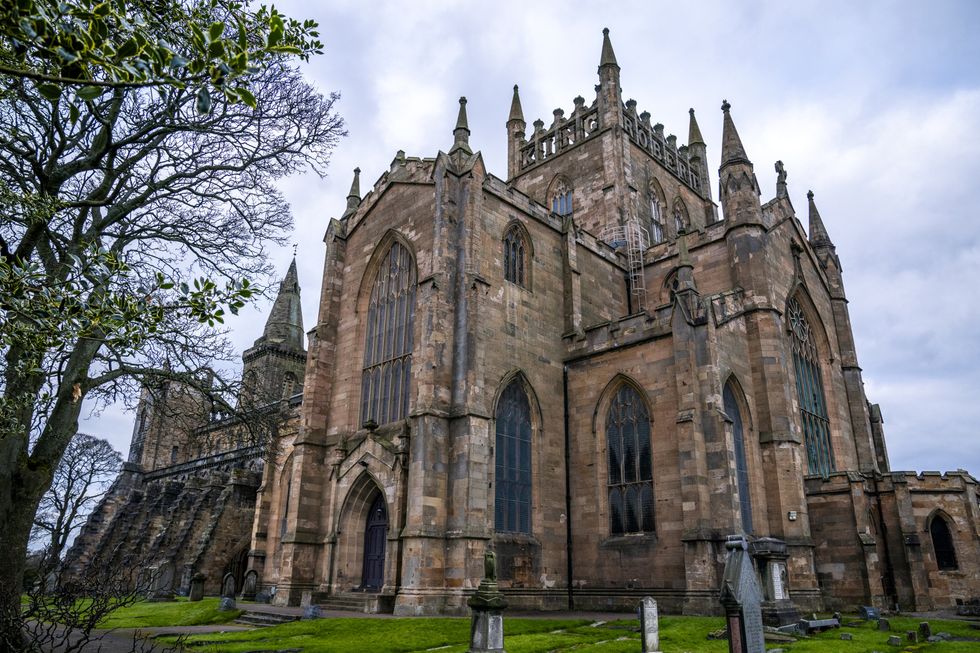A site with rich history, Queen Margaret built the original priory in 1072
Don't Miss
Most Read
Trending on GB News
Dunfermline’s historic abbey church has launched a public consultation after the sum to repair and modernise part of the near 1,000-year-old landmark was costed at £8million.
Around half of that is required for repairs to the building’s roof, stonework and stained glass windows, while another £4m will be required for necessary updates to make the abbey fit for a 21st Century community.
The building’s unique tower can be seen from across the city, with the words "King Robert The Bruce" build straight into the stonework.
King of Scots from 1306 to 1329, Robert the Bruce not only funded the building of the monastery and dwellings of the site - the ruins of which can still be visited today - he was laid to rest in the abbey grounds.

The site of Dunfermline Abbey is cooperatively managed by three institutions
PA
Today, the site of Dunfermline Abbey is cooperatively managed by three institutions: Fife council overseeing the grounds; Historic Environment Scotland taking care of the 11th Century priory built by Queen Margaret; and the Church of Scotland holds services in the 200-year-old Abbey Church.
With repairs and renovations typically covered by the congregation, the Abbey Church’s congregation of 425 would each need to part with around £19,000 to meet the required total.
David Williams, Joint Session Clerk at the Abbey Church, says surveys to the building were done as part of the congregation’s upkeep of the historical site.
He said: "They’ve shown us there are wear and tear issues on the 200-year-old building, which are not unexpected and when you add all that together it comes to around £4million worth of investment required."
He added: "On top of that we see the potential to change this building from its purer use as a place of worship and there are other things you can do with the building to make it better suited to its purpose.
David explains the church intends to install lift access, remove the pews, improve community spaces and capitalise on presently unused areas of the building "for community interpretation".
LATEST DEVELOPMENTS:
The kirk receives no public funding and hopes to attract "appropriate large funding organisations" given the scale of the sum, but has set up a Just Giving page for the congregation and residents of Dunfermline.
An exhibition will open in the Dunfermline Carnegie Library, inviting the public to learn more about the history of the site, before the public consultation moves back to the Abbey Church, allowing the community to have their say on modernising the facilities.
Reverend Dr Mary Ann Rennie said "around 40,000 people" visit Dunfermline Abbey annually and believes, "people clearly see that King Robert the Bruce tower as being an identifier for the city of Dunfermline".
She admitted her focus is less on the "eye-watering sums of money" and more on the abbey’s value in serving the local community.
"For us," she says, "this is about understanding how the community value this place - 'is this building valuable and important to them?
“Our rich history attracts visitors and pilgrims from all over the world - that’s why we are opening a conversation with the local community, key organisations and those with an interest about how we go forward."

The King and Queen visited in October 2022 to celebrate Dunfermline’s recognition as Scotland’s eighth city
PA
Now closing in on its millennial anniversary, the abbey is enriched by centuries of royal ties.
After Queen Margaret built the original priory in 1072, her son King David saw it transformed into a Benedictine abbey.
In 1320, King Robert the Bruce funded the abbey’s completion and guest houses before Queen Mary oversaw major developments to the palace and nave two centuries later.
More recently, the King and Queen visited in October 2022 to celebrate Dunfermline’s recognition as Scotland’s eighth city.
Weighing the important considerations of the site’s past and future, David calls the abbey "a very special place".
"The more I get involved, the more I understand what this building offers and the stories that can be told from it," he said, adding "you can tell a lot about the story of Scotland and the development of Dunfermline from this one site."
The Abbey exhibition will open at Dunfermline’s Carnegie Library on March 22 and run until April 5, after which the Abbey Church of Dunfermline will consult with the community on penning the next chapter of this beloved historical landmark.








